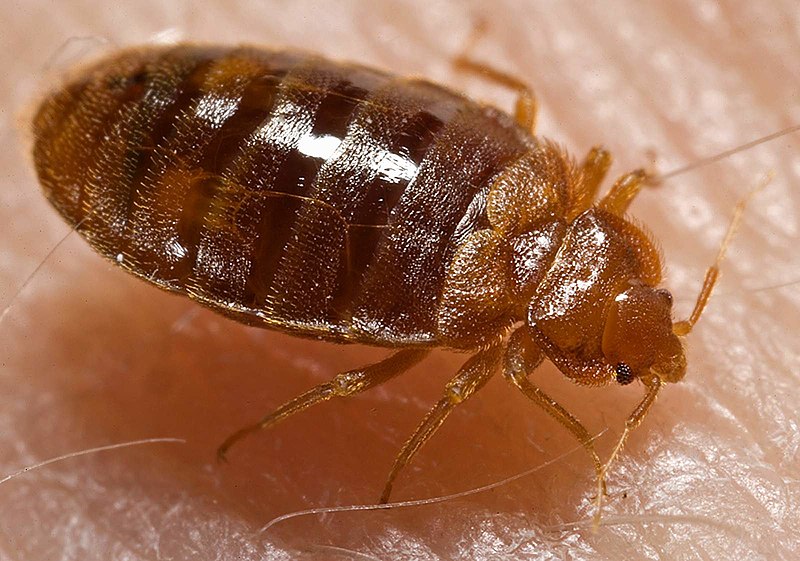Fail:Bed bug, Cimex lectularius.jpg
Penampilan

Saiz pralihat ini: 800 × 561 piksel. Leraian-leraian lain: 320 × 224 piksel | 640 × 449 piksel | 1,024 × 718 piksel | 1,280 × 898 piksel | 1,600 × 1,122 piksel.
Fail asli (1,600 × 1,122 piksel, saiz fail: 161 KB, jenis MIME: image/jpeg)
Sejarah fail
Klik pada tarikh/waktu untuk melihat rupa fail tersebut pada waktu itu.
| Tarikh/Waktu | Gambar kenit | Ukuran | Pengguna | Komen | |
|---|---|---|---|---|---|
| semasa | 14:11, 17 Mei 2007 |  | 1,600 × 1,122 (161 KB) | Patho | == Summary == {{Information |Description=ID#: 9822 Description: This 2006 photograph depicted an oblique-dorsal view of a '''bed bug nymph, Cimex lectularius''', as it was in the process of ingesting a blood meal from the arm of a “voluntary” human h |
Penggunaan fail
2 buah laman berikut menggunakan fail ini:
Penggunaan fail sejagat
Fail ini digunakan oleh wiki-wiki lain yang berikut:
- Penggunaan di af.wikipedia.org
- Penggunaan di an.wikipedia.org
- Penggunaan di ar.wikipedia.org
- Penggunaan di arz.wikipedia.org
- Penggunaan di ast.wikipedia.org
- Penggunaan di as.wikipedia.org
- Penggunaan di azb.wikipedia.org
- Penggunaan di be.wikipedia.org
- Penggunaan di bg.wikipedia.org
- Penggunaan di bjn.wikipedia.org
- Penggunaan di bn.wikipedia.org
- Penggunaan di bs.wikipedia.org
- Penggunaan di ca.wikipedia.org
- Penggunaan di ca.wikiquote.org
- Penggunaan di ca.wiktionary.org
- Penggunaan di ceb.wikipedia.org
- Penggunaan di cs.wikipedia.org
- Penggunaan di cv.wikipedia.org
- Penggunaan di dag.wikipedia.org
- Penggunaan di de.wikibooks.org
- Penggunaan di din.wikipedia.org
- Penggunaan di el.wikipedia.org
- Penggunaan di eml.wikipedia.org
- Penggunaan di en.wikipedia.org
- Penggunaan di en.wikinews.org
- Penggunaan di en.wiktionary.org
Lihat banyak lagi penggunaan sejagat bagi fail ini.

